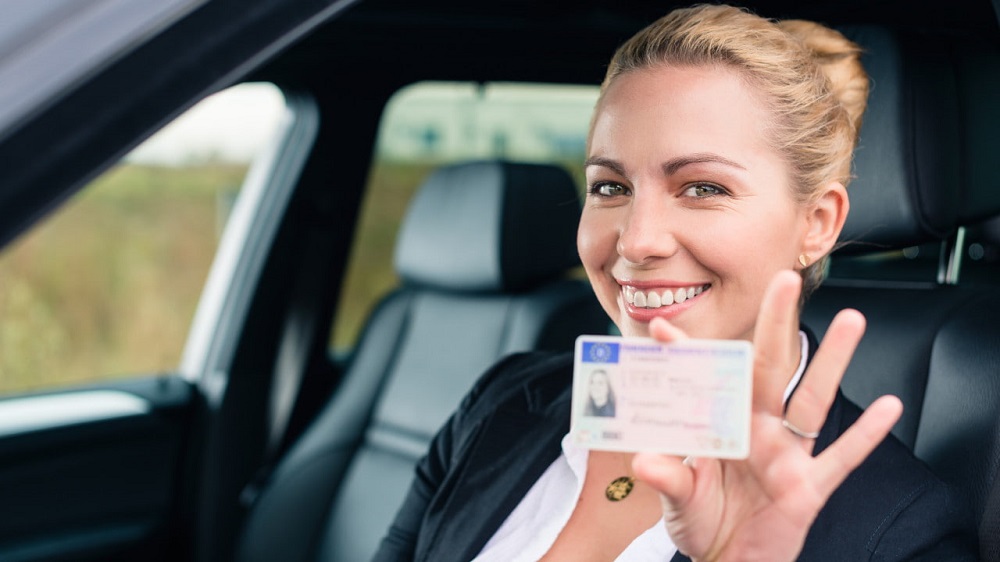Spain, with its rich history, vibrant culture, and stunning landscapes, attracts people from all over the world. Whether you’re planning to settle down, work, or just explore the country, having a driver’s license can greatly enrich your experience. This guide aims to simplify the process of obtaining a driver’s license in Spain, offering insights into the role of driving instructors, the nature of the exams, and the necessary procedures involved.

Rafael Peralta
Meet Rafael Peralta, a fresh-faced driver who recently obtained his driver’s license in Spain. Rafael is a young, enthusiastic individual who is passionate about driving and eager to share his newly acquired knowledge with others. He navigated the process of obtaining a driver’s license with diligence and determination, mastering the theoretical knowledge and practical skills required to drive safely and confidently on the Spanish roads.
He understands the challenges that come with learning to drive and navigating the process of obtaining a driver’s license. That’s why he’s committed to using his experience to assist others on their journey to becoming licensed drivers. Whether it’s offering tips for passing the DGT exams, sharing insights about the application process, or providing moral support to those feeling overwhelmed, Rafael is always ready to lend a hand.
Obtaining a driver’s license in Spain might seem challenging, especially if you’re a foreigner unfamiliar with the system. However, with the right information and preparation, the process can be navigated smoothly and successfully. This guide is designed to equip you with all the necessary information, making the journey to getting your Spanish driver’s license less daunting and more rewarding.
If you are looking for buying or renting a car, check these blogs:
Guide for Mastering Car Buying in Spain
Ultimate Guide to Car Renting in Spain
Decoding the DGT: Your Guide to Spain’s Driving Authority
The Spanish driving system is a well-structured and regulated framework overseen by the Directorate General of Traffic (DGT). The DGT is a government body that plays a pivotal role in maintaining road safety in Spain. It sets the standards for driving education, conducts driving tests, and issues driving licenses. The DGT’s primary objective is to ensure that all drivers on the road are competent and have undergone the necessary training and testing.
In Spain, the minimum age to obtain a driver’s license is 18 years. This age requirement is in place to ensure that drivers have the necessary maturity and judgment to drive safely on the roads. However, prospective drivers can start taking driving lessons and prepare for the theoretical exam when they are 17. This allows them to gain valuable knowledge and experience before they start driving independently.
The DGT also oversees the training and certification of driving instructors. Driving instructors play a key role in the Spanish driving system. They provide theoretical lessons, practical training, and guidance to help prospective drivers pass the DGT exams. The DGT ensures that all driving instructors are qualified and competent to teach prospective drivers. This involves a rigorous process of training and certification for the instructors themselves.

The Spanish driving system is designed to ensure that all drivers on the road are competent and capable of driving safely. It involves a rigorous process of education, testing, and certification. Prospective drivers must pass a theoretical exam that tests their knowledge of traffic rules, road signs, and driving etiquette. They must also pass a practical exam that assesses their driving skills. In addition, they must undergo a medical examination to ensure that they are physically and mentally fit to drive.
Behind the Wheel: The DGT’s Role in Spain’s Driving System
The Directorate General of Traffic (DGT) is an indispensable entity in Spain, playing a pivotal role in maintaining and enhancing road safety across the country. As the primary governing body for all traffic-related matters, the DGT is tasked with a multitude of responsibilities that collectively ensure the smooth functioning of the Spanish driving system.
One of the DGT’s primary responsibilities is setting the standards for driving education. This involves outlining the curriculum for driving schools, determining the criteria for driving instructors, and ensuring that the education provided is comprehensive, up-to-date, and conducive to producing competent drivers. By setting these standards, the DGT ensures that every individual who steps behind the wheel has been equipped with the necessary knowledge and skills to navigate the roads safely and responsibly.
In addition to setting educational standards, the DGT also conducts driving tests. These tests, both theoretical and practical, are designed to assess a prospective driver’s understanding of traffic rules, their ability to handle a vehicle, and their overall readiness to join the driving community. By conducting these tests, the DGT ensures that only qualified individuals are granted driving licenses, thereby maintaining a high standard of driving competence on Spanish roads.
Issuing driving licenses is another crucial function of the DGT. Every driver’s license issued serves as a testament to the holder’s driving competence, ascertained through rigorous testing and evaluation. The DGT maintains a meticulous record of all licenses issued, suspended, or revoked, thereby keeping track of all legal drivers in the country.
Beyond education, testing, and licensing, the DGT also plays a significant role in traffic regulation. This involves monitoring road usage, implementing traffic rules, and ensuring that all road users adhere to these rules. The DGT works in conjunction with local law enforcement to enforce traffic laws, penalizing violations to maintain order and safety on the roads.
The DGT also undertakes the implementation of road safety measures. This includes everything from advocating for safer road infrastructure to launching awareness campaigns on various aspects of road safety. Regular road safety campaigns are conducted to educate the public about safe driving practices, the importance of adhering to traffic rules, and the consequences of violations.
The DGT is the backbone of the Spanish driving system, ensuring that all drivers on the road are competent, that traffic rules are adhered to, and that safety is prioritized. Through its various functions, the DGT not only maintains order and safety on the roads but also works continuously towards improving the driving environment in Spain.
Have Fun With this Short Driving Test Exam!!
Driving Test Exam
1. What should you do when you see a stop sign?
2. What does a yellow traffic light indicate?
3. When should you turn on your headlights?
4. What should you do when you approach a pedestrian crosswalk?
5. When are you allowed to use the car horn?
Age and the Open Road: Understanding Spain’s Driving Age Requirements
In Spain, the journey to obtaining a driver’s license begins at the age of 18. This is the legal age at which an individual is permitted to hold a driver’s license and operate a vehicle independently on Spanish roads. However, the preparation for this significant milestone can commence a year earlier, at the age of 17. This is when prospective drivers are allowed to enroll in driving schools and start their theoretical education, laying the groundwork for their future driving endeavors.
It’s crucial to understand that the age requirement is not arbitrary but is rooted in considerations of safety and responsibility. The age of 18 is generally recognized as the threshold of adulthood, a stage of life where individuals are expected to have developed a certain level of maturity, judgment, and responsibility. These qualities are essential for safe driving, which involves not just technical skills but also decision-making, risk assessment, and adherence to rules.
Even if you are a seasoned driver with a valid driver’s license from another country, the age requirement still applies. Regardless of your prior driving experience, you must be at least 18 years old to drive in Spain. This rule ensures a uniform standard of maturity and responsibility among all drivers on Spanish roads, contributing to overall road safety.

While you can start your driving education at 17, it’s important to note that this early start doesn’t grant you early access to a driver’s license. You can begin learning the theoretical aspects of driving and familiarize yourself with the rules of the road, but the practical exam, the final step towards obtaining a driver’s license, is reserved for those who have turned 18. This distinction ensures that while eager learners can get a head start on their driving education, the responsibility of actual driving is entrusted only to those who have reached the age of legal adulthood.
The age requirement for driving in Spain is a carefully considered measure designed to ensure that every driver on the road possesses not just the technical skills to operate a vehicle, but also the maturity and judgment necessary for safe and responsible driving.
Your License to Drive: Exploring Spain’s Diverse Driver’s Licenses
Spain provides a range of driving licenses, each tailored to different types of vehicles. These include the B license for cars, the A1 and A2 licenses for motorcycles, and the C and D licenses for larger vehicles like trucks and buses. Each license type demands a unique set of skills and knowledge, and the process to acquire each one differs accordingly.
If you need help for deciding which places from Spain to visit, check these blogs: Great Places in Spain to Visit
The B License: Your Passport to Driving Cars in Spain
In Spain, the B license stands as the most prevalent type of driver’s license. This license is the gateway to driving cars and other light vehicles, making it a versatile and sought-after credential for those eager to navigate the roads of Spain. The process to obtain a B license is comprehensive, designed to ensure that every driver is well-equipped with the necessary knowledge, skills, and health to drive safely.
The journey to obtaining a B license begins with a theoretical exam. This exam is designed to test your understanding of the fundamental aspects of driving. It delves into traffic rules, ensuring you understand the laws that govern the roads. It tests your knowledge of road signs, ensuring you can navigate the roads effectively and respond correctly to various signs. It also assesses your understanding of driving etiquette, ensuring you can interact with other road users in a respectful and safe manner. The theoretical exam forms the foundation of your driving education, ensuring you are well-versed in the theoretical aspects of driving before you get behind the wheel.
Following the theoretical exam, you’ll face the practical exam. This is where you demonstrate your driving skills in a real-world setting. The practical exam assesses your ability to handle a vehicle, your response to various traffic situations, and your overall comfort and safety while driving. It’s a hands-on test that gives you the opportunity to translate your theoretical knowledge into practice.
In addition to the theoretical and practical exams, obtaining a B license also requires a medical examination. This examination ensures that you are physically and mentally fit to drive. It assesses your vision and hearing, checks for any medical conditions that could affect your ability to drive, and evaluates your mental alertness. The medical examination is a crucial step in the licensing process, ensuring that every driver is not only knowledgeable and skilled but also healthy enough to drive.
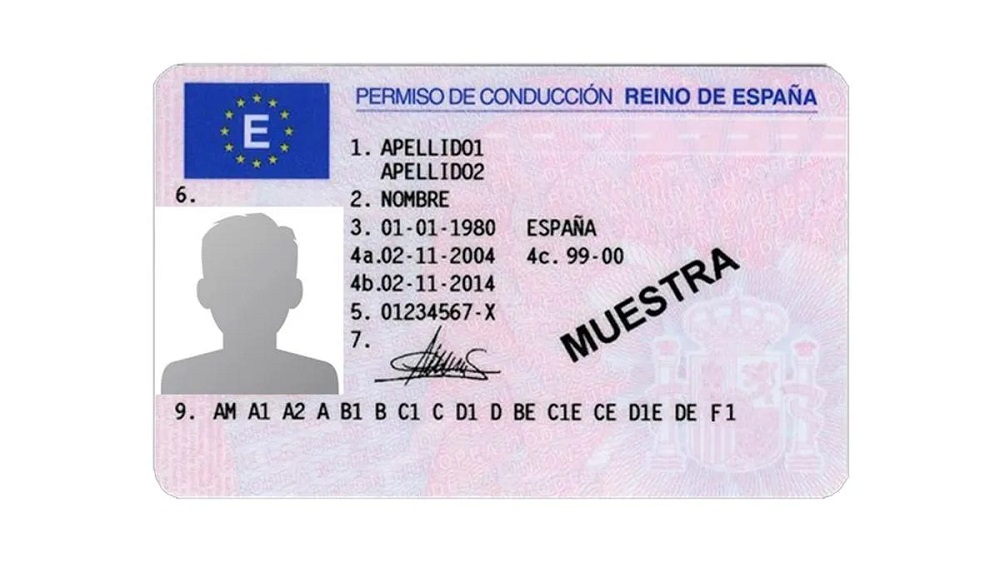
The B license in Spain is a highly coveted credential, renowned for its comprehensive coverage of most types of vehicles. It stands as the most popular choice among aspiring drivers, primarily due to the flexibility and versatility it offers. With a B license in hand, you gain the legal right to drive a wide array of vehicles, opening up a world of possibilities for personal and professional mobility.
The B license is not just a permit to drive; it’s a testament to your versatility as a driver. It signifies that you are capable of handling not just cars, but also other light vehicles. This makes it an invaluable asset for anyone looking to drive in Spain, whether for personal commuting, leisurely exploration, or professional purposes such as light commercial transportation. The B license, with its broad vehicle coverage, ensures that you are well-equipped to handle various driving scenarios.
Moreover, the B license is more than just a driving permit; it’s a badge of competence. It signifies that you have successfully navigated the rigorous process of obtaining a driver’s license in Spain. This process involves comprehensive education, thorough testing of theoretical knowledge and practical skills, and a detailed medical examination to ensure physical and mental fitness for driving.
When you hold a B license, it reflects your dedication to learning, your ability to apply your knowledge in practical situations, and your commitment to maintaining a high standard of health for safe driving. It’s a symbol of your readiness to take on the responsibilities of the road, and your commitment to upholding the standards of safety and etiquette in the Spanish driving community.
The B license is more than just a permit to drive a wide range of vehicles. It’s a reflection of your comprehensive driving education, your proven skills, and your fitness to drive. It’s a testament to your competence and readiness to navigate the roads of Spain safely and responsibly.
Two-Wheel Freedom: Understanding the A1 and A2 Motorcycle Licenses
The A1 and A2 licenses in Spain cater specifically to motorcycle enthusiasts. These licenses grant the holder the right to ride motorcycles, albeit with different engine capacities. The A1 license is designed for motorcycles with a maximum engine capacity of 125cc, making it suitable for lighter, more manageable motorcycles. On the other hand, the A2 license caters to motorcycles with a higher engine capacity, offering a more powerful and exhilarating riding experience.
The process to obtain these motorcycle licenses mirrors that of the B license in many ways. Aspiring riders must undergo a theoretical exam, similar to the one for the B license, which tests their understanding of traffic rules, road signs, and driving etiquette. However, the practical exam differs significantly. Instead of demonstrating driving skills in a car, applicants for the A1 and A2 licenses must showcase their motorcycle handling skills. This exam assesses their ability to control the motorcycle, navigate through traffic, and respond appropriately to various road situations.
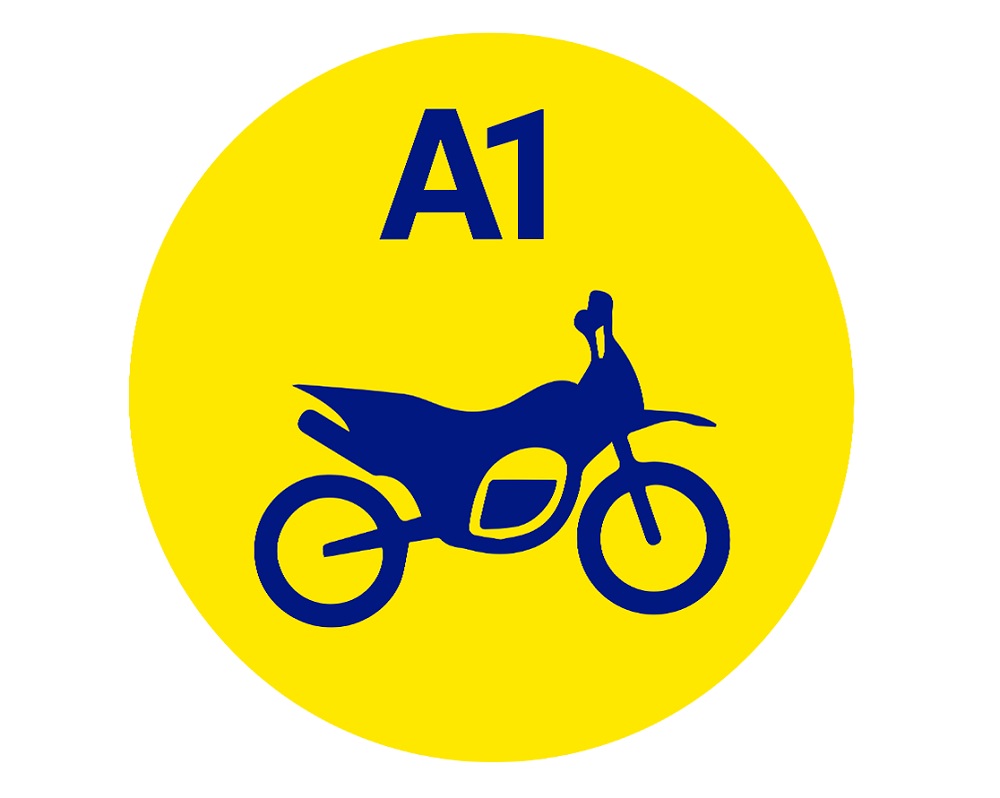
The medical examination, a crucial part of the licensing process, remains the same for the A1 and A2 licenses. This examination ensures that the applicant is physically and mentally fit to handle a motorcycle on the road. It includes a vision test, hearing test, and a brief psychological evaluation, ensuring that the rider is fully equipped to handle the unique challenges that come with motorcycle riding.
The A1 and A2 licenses are perfect for those who prefer the thrill and freedom of navigating the roads on two wheels. They cater to different types of riders, from those who prefer the manageability of a 125cc motorcycle to those who crave the power of a higher-capacity engine. Depending on the specific license you hold, you can ride motorcycles of various sizes, offering a range of riding experiences.
The A1 and A2 licenses open up a whole new world of riding possibilities. They are a testament to your competence as a motorcycle rider, reflecting your successful completion of a rigorous process of education, testing, and health checks. Whether you’re a casual rider or a motorcycle enthusiast, these licenses empower you to explore the roads of Spain on your terms.
Big Rigs and Buses: The C and D Licenses for Larger Vehicles
The C and D licenses in Spain are designed for those who aspire to navigate the roads in larger vehicles. These licenses are a step up from the standard B license, granting the holder the right to operate trucks and buses, respectively. The process to obtain these licenses is more rigorous, reflecting the increased complexity and responsibility of driving larger vehicles.
The C license is specifically for trucks. This license allows you to operate heavy goods vehicles, making it an essential credential for those involved in logistics, transportation, or any profession that requires the handling of large vehicles. To obtain a C license, you must already hold a B license, signifying your basic competence in driving. In addition to this, you’ll need to undergo additional training that focuses on the specific skills and knowledge required to handle a truck. This includes understanding the mechanics of a truck, learning how to maneuver large vehicles, and dealing with the unique challenges that come with truck driving.

Similarly, the D license is for buses. This license is a must-have for anyone looking to drive passenger vehicles professionally. Like the C license, you must already hold a B license to apply for a D license. The training for a D license focuses on the skills and knowledge necessary to safely transport passengers. This includes understanding passenger safety, learning how to handle a large passenger vehicle, and dealing with the unique challenges of bus driving, such as managing passenger entry and exit, navigating bus lanes, and ensuring a smooth and safe ride for all passengers.

Both the C and D licenses require a higher level of skill and knowledge compared to the B license. Driving larger vehicles presents unique challenges, from maneuvering in traffic and parking to understanding the vehicle’s mechanics and handling passenger or cargo safety. These licenses are designed to ensure that drivers of larger vehicles are well-equipped to handle these challenges.
In essence, the C and D licenses are specialized credentials for those who wish to drive larger vehicles. They reflect a driver’s advanced competence and specialized training, making them invaluable for anyone looking to drive trucks or buses professionally. Whether you’re transporting goods in a truck or ferrying passengers in a bus, these licenses certify that you have the necessary skills, knowledge, and training to do so safely and efficiently.
Finding Your Road Mentor: How to Choose the Right Driving School in Spain
The journey to obtaining a driver’s license in Spain begins with enrolling in a driving school. These institutions provide both theoretical and practical lessons, equipping you with the knowledge and skills needed for the DGT exams. Selecting a reputable driving school with seasoned instructors is a crucial step in this process.
Driving schools serve a pivotal role in your journey towards becoming a licensed driver. They offer in-depth training that covers all facets of driving. This includes understanding and adhering to traffic rules, as well as handling a vehicle in a variety of situations. By choosing a quality driving school, you’re setting a solid foundation for your driving education.
The Best for the Best: Choosing the Perfect Driving School
Choosing a driving school is a crucial step in your journey to obtaining a driver’s license in Spain. The quality of your driving education can significantly influence your success in passing the exams and becoming a competent driver. Therefore, it’s essential to consider several factors when selecting a driving school.
Firstly, consider the reputation of the driving school. A well-regarded driving school is likely to provide high-quality education and training. You can gauge a school’s reputation through online reviews and ratings. These can provide insights into the experiences of past students, giving you a sense of the quality of instruction and the overall learning environment. Look for schools with consistently positive reviews and high ratings.
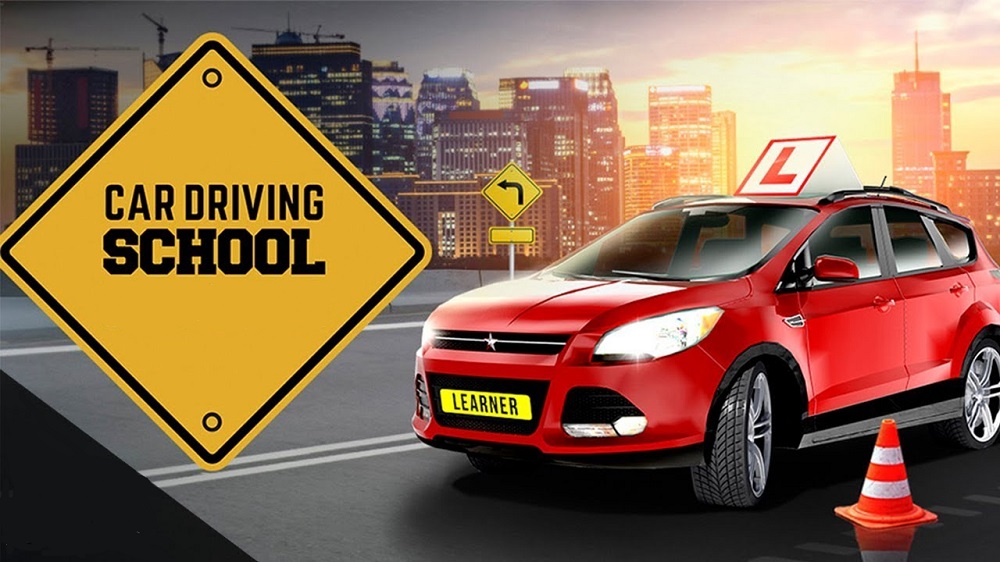
Secondly, the qualifications and experience of the instructors are paramount. A good driving school should have a team of instructors who are not only well-qualified but also experienced in teaching driving skills. They should be knowledgeable about the Spanish driving system, traffic rules, and driving etiquette. Moreover, they should have the ability to effectively communicate this knowledge and teach the practical skills necessary for safe and competent driving.
Lastly, consider the pass rate of the driving school’s students. A high pass rate is a strong indicator of the effectiveness of the school’s training program. It suggests that the school’s approach to teaching both the theoretical and practical aspects of driving is successful in preparing students for the exams.
A good driving school should have a strong reputation, qualified and experienced instructors, and a high pass rate. These factors collectively indicate a school’s ability to provide a comprehensive and effective driving education. Remember, the driving school you choose will play a significant role in shaping your driving skills and knowledge, so take the time to make an informed decision.
Learning from the Best: The Crucial Role of Driving Instructors
Driving instructors are the cornerstone of your driving education. They serve as your guide and mentor throughout your journey to becoming a licensed driver, providing you with the necessary theoretical knowledge and practical skills. Their role extends beyond mere instruction; they shape your understanding of driving and prepare you for the challenges of navigating the roads.
A good driving instructor brings a wealth of knowledge to the table. They are well-versed in the intricacies of the driving system, traffic rules, and driving etiquette. They understand the complexities of driving and are equipped to teach you how to handle various driving scenarios. Their knowledge forms the basis of your theoretical lessons, where you learn everything from recognizing road signs to understanding right-of-way rules.
However, knowledge alone isn’t enough. A good driving instructor also excels in communication. They have the ability to break down complex concepts into digestible information, making it easier for you to grasp the theory of driving. They can adapt their teaching methods to suit your learning style, ensuring that you fully understand the lessons. Effective communication is also crucial during practical training, where clear instructions and constructive feedback can significantly enhance your learning experience.

Patience is another hallmark of a good driving instructor. Learning to drive can be a daunting task, and it’s natural for learners to make mistakes along the way. A patient instructor understands this and provides a supportive and encouraging learning environment. They allow you to learn at your own pace, providing guidance and reassurance when you need it.
Practical training under the watchful eye of a driving instructor is where you learn to apply your theoretical knowledge. A good instructor provides real-world driving experiences that prepare you for the realities of driving on the road. They teach you how to handle the vehicle, navigate traffic, and respond to unexpected situations.
A good driving instructor is patient, knowledgeable, and an effective communicator. They provide comprehensive theoretical lessons, practical training, and continuous guidance to help you pass the DGT exams and become a competent driver. Choosing the right instructor can significantly enhance your learning experience and increase your chances of passing the exams on your first attempt.
Mastering the Rules: Acing Your Theoretical Driving Exam in Spain
The theoretical exam is a key component in the process of obtaining a driver’s license in Spain. It assesses your understanding of road signs, traffic rules, and driving etiquette. The exam comprises 30 multiple-choice questions, and to pass, you can make no more than three errors.
Most driving schools provide study materials and practice tests to aid your preparation. These resources are designed to familiarize you with the exam format and the types of questions you’ll encounter. They also allow you to assess your understanding of the material and identify areas where you may need further study.
The theoretical exam plays a crucial role in ensuring road safety. By testing your knowledge of the rules of the road, it ensures that you have the necessary understanding to navigate the roads safely and effectively. So, it’s important to take the time to prepare thoroughly for this exam, to ensure you’re ready to become a responsible and competent driver.
Study Smart: Effective Strategies for Preparing for Your Theoretical Exam
The theoretical exam is a pivotal part of the process to obtain a driver’s license in Spain. This computer-based test is designed to assess your understanding of the fundamental aspects of driving, including road signs, traffic rules, and driving etiquette. It serves as a measure of your theoretical knowledge and your readiness to apply this knowledge in practical driving scenarios.
The exam comprises 30 multiple-choice questions, each designed to test a specific aspect of driving theory. The questions range from identifying road signs and their meanings to understanding traffic rules and the appropriate driving etiquette in various situations. The diverse range of topics ensures a comprehensive assessment of your theoretical driving knowledge.
You are allotted 30 minutes to complete the exam, providing you with approximately one minute per question. This time limit tests not only your knowledge but also your ability to think quickly and make accurate decisions, skills that are crucial for safe and effective driving.
To pass the theoretical exam, you must answer at least 28 out of the 30 questions correctly. This high pass mark underscores the importance of a thorough understanding of driving theory. It ensures that only those who have a comprehensive grasp of the rules of the road and can apply this knowledge effectively are allowed to proceed to the practical driving test.
The theoretical exam is a rigorous test of your driving knowledge. It’s designed to ensure that you are well-versed in the rules of the road and prepared to apply this knowledge in real-life driving situations. A successful result in this exam brings you one step closer to obtaining your driver’s license and the freedom to navigate the roads of Spain.
Study Materials and Practice Tests: Doing Your Best
Driving schools play a pivotal role in preparing you for the theoretical exam. They provide a wealth of resources, including study materials and practice tests, designed to equip you with the knowledge and confidence needed to pass the exam.
The study materials provided by driving schools are comprehensive, covering all the topics that will be tested in the exam. These materials delve into the intricacies of road signs, traffic rules, and driving etiquette, providing detailed explanations and examples. They serve as a valuable resource for learning and revision, ensuring you have a thorough understanding of all the necessary topics.
In addition to study materials, driving schools also offer practice tests. These tests mimic the format of the actual exam, allowing you to familiarize yourself with the type of questions you’ll encounter and the time constraints you’ll be under. Practice tests are an excellent way to assess your understanding of the material and identify any areas where you may need further study.

Regular study is key to success in the theoretical exam. It’s advisable to establish a consistent study routine, dedicating a certain amount of time each day to learning and revision. This steady approach to learning helps to reinforce your understanding and retention of the material.
Taking several practice tests before the actual exam is also highly recommended. These tests not only help you gauge your readiness for the exam but also help to increase your confidence. By identifying areas of weakness, you can focus your study efforts more effectively and ensure you’re fully prepared on the day of the exam.
Preparing for the theoretical exam involves a combination of diligent study, regular practice tests, and consistent revision. With the right preparation and resources provided by your driving school, you can approach the exam with confidence and a thorough understanding of the material, increasing your chances of passing on your first attempt.
Taking the Wheel: What to Expect in Your Practical Driving Exam
The practical exam is a critical part of the process of obtaining a driver’s license in Spain. It’s designed to evaluate your driving skills in a real-world setting. During the exam, you’ll be required to drive on public roads under the supervision of a DGT examiner. The exam typically lasts about 25 minutes, during which you’ll need to demonstrate your ability to handle the vehicle safely and confidently.
The practical exam is more than just a test of your driving skills. It’s an opportunity for you to showcase your ability to navigate real-world driving scenarios. You’ll need to show that you can handle the vehicle smoothly, obey traffic rules, and respond appropriately to various road conditions.
This exam is the final step in the process of obtaining a driver’s license. It’s your chance to prove that you’ve mastered the skills taught during your driving lessons and that you’re ready to take on the responsibility of driving on the roads. So, it’s important to approach the practical exam with confidence and a thorough understanding of what’s expected of you as a driver.
Structure of the Practical Exam
The practical exam is a critical component of the driver’s license process in Spain. Unlike the theoretical exam, which tests your understanding of driving rules and regulations, the practical exam assesses your ability to apply this knowledge in real-world driving situations. Conducted on public roads and typically lasting about 25 minutes, this exam provides a comprehensive evaluation of your driving skills.
During the practical exam, you’ll be required to perform a variety of driving tasks that demonstrate your ability to handle a vehicle safely and effectively. These tasks include starting and stopping the vehicle smoothly, executing turns correctly, parking the vehicle accurately, and navigating through traffic efficiently. Each task is designed to test a specific driving skill, ensuring a comprehensive assessment of your driving abilities.
The examiner will closely observe your performance throughout the exam. They will assess your ability to handle the vehicle, checking for smooth control and correct operation of the vehicle’s controls. They will also evaluate your adherence to traffic rules, ensuring that you obey speed limits, traffic signs, and right-of-way rules.
Your ability to respond appropriately to road conditions is another crucial aspect of the practical exam. The examiner will assess how you react to various traffic situations, such as changing traffic lights, pedestrian crossings, and other vehicles’ actions. They will also check how you handle different road conditions, such as wet or uneven roads.
The practical exam is designed to simulate the experience of driving in a real-world setting. It gives the examiner the opportunity to see firsthand how you handle the vehicle, how you interact with other road users, and how you respond to various traffic situations. A successful performance in the practical exam demonstrates your readiness to drive safely and responsibly on the roads of Spain.
Impressing the Examiner: Meeting the DGT’s Expectations in Your Practical Exam
The DGT examiner’s primary expectation during the practical exam is for you to exhibit safe and confident driving. This involves a combination of obeying traffic rules, demonstrating awareness of road signs, and showing consideration for other road users. The examiner’s objective is to ascertain whether you are capable of driving safely and confidently on the roads of Spain.
Adherence to traffic rules is a fundamental aspect of safe driving. This includes obeying speed limits, following right-of-way rules, and complying with traffic signals. The examiner will be closely observing your adherence to these rules throughout the exam. Any violation of traffic rules, no matter how minor, can negatively impact your exam result.
Awareness of road signs is another crucial aspect of the practical exam. Road signs provide important information about road conditions, traffic rules, and potential hazards. The examiner will expect you to recognize and correctly respond to various road signs during the exam. Your ability to do so demonstrates your understanding of the rules of the road and your readiness to drive safely.
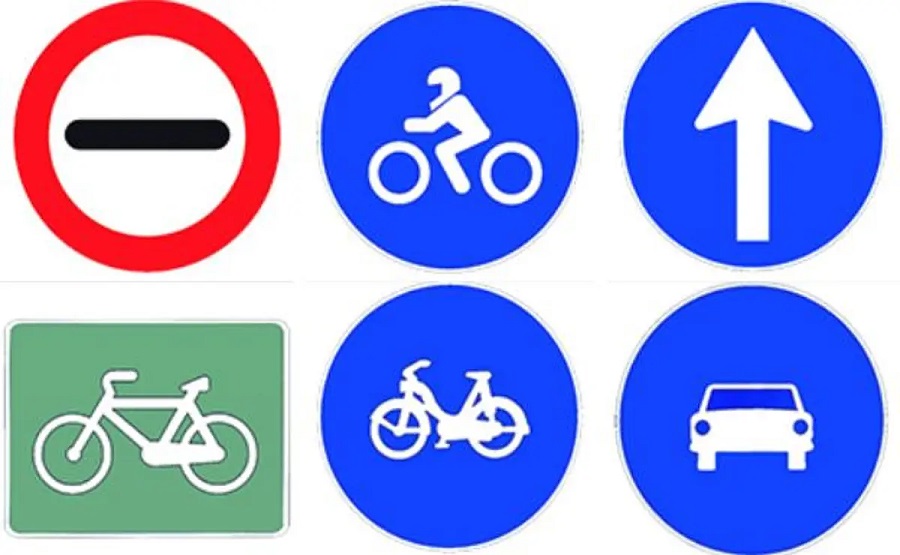
Consideration for other road users is a key element of confident driving. This involves maintaining a safe distance from other vehicles, yielding to pedestrians at crossings, and signaling your intentions clearly. The examiner will assess your ability to interact safely and courteously with other road users.
The examiner will also evaluate your ability to handle unexpected situations. This could involve pedestrians suddenly crossing the road, abrupt changes in traffic conditions, or unexpected actions by other drivers. Your ability to react appropriately to these situations demonstrates your ability to maintain control under pressure and ensure safety on the road.
The DGT examiner’s main goal during the practical exam is to ensure that you can drive safely and confidently on the roads. By demonstrating adherence to traffic rules, awareness of road signs, consideration for other road users, and the ability to handle unexpected situations, you can meet the examiner’s expectations and increase your chances of passing the practical exam.
Fit for the Road: Navigating Your Medical Examination for Driving
Before you can secure a driver’s license in Spain, you’re required to pass a medical examination. This examination is designed to assess your physical and mental fitness to drive. It includes a vision test to ensure you can see clearly, a hearing test to confirm you can hear important sounds while driving, and a brief psychological evaluation to assess your mental readiness for the responsibility of driving.
The medical examination is a crucial part of the process of obtaining a driver’s license. It’s designed to ensure that you’re physically and mentally capable of driving safely. This includes making sure you don’t have any health conditions that could potentially impair your ability to drive safely.
This examination is more than just a formality. It’s a safeguard to ensure that every driver on the road is capable of handling the responsibility that comes with driving. It’s a key step in ensuring the safety of not just the driver, but also other road users. Therefore, it’s important to approach this examination with the seriousness it deserves, understanding that it’s a critical step towards becoming a licensed driver.
Eyes on the Road: The Importance of the Vision Test
The vision test is an integral part of the driver’s license process in Spain. This test evaluates your eyesight to ensure that it meets the necessary standards for safe driving. Good vision is crucial for driving, as it enables you to perceive road signs, other vehicles, and potential hazards on the road accurately and promptly.
During the vision test, you’ll be asked to read letters or numbers from a chart at a certain distance. This is similar to the standard eye tests conducted at an optometrist’s office. The chart typically consists of several lines of letters or numbers of decreasing size. Your ability to read these lines accurately provides a measure of your visual acuity, indicating how clearly you can see.
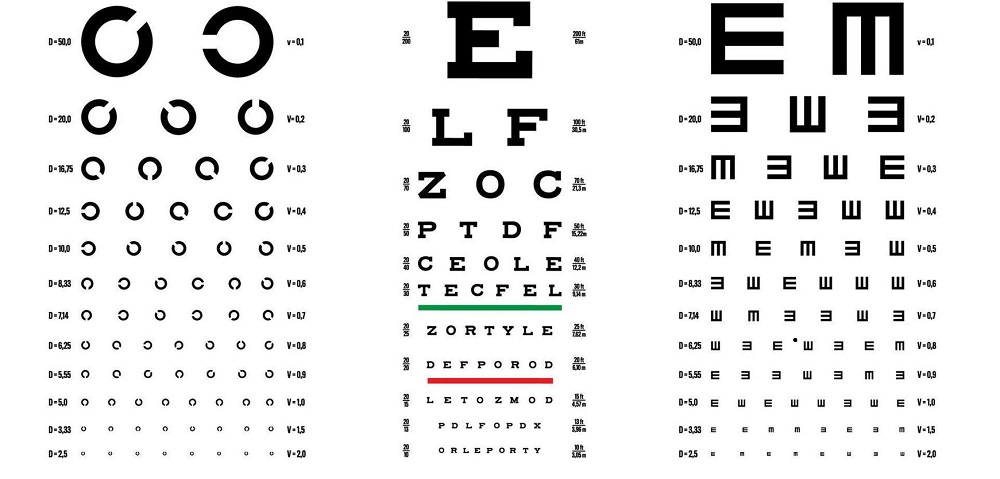
In some cases, you may also be required to identify colors. This part of the test assesses your color vision, which is important for recognizing traffic lights and other color-coded road signs. The ability to distinguish between red, yellow, and green, for instance, is crucial for understanding traffic signals and responding appropriately.
If you normally wear glasses or contact lenses, it’s important to wear them for the vision test. The test aims to assess your vision as it would be while driving, so any corrective eyewear you typically use should be worn. If you pass the vision test with glasses or contact lenses, this will be noted on your driver’s license, and you’ll be required to wear them whenever you drive.
Sounds of Safety: Understanding the Hearing Test
The hearing test is another essential component of the driver’s license process in Spain. This test evaluates your auditory capabilities to ensure they meet the necessary standards for safe driving. Good hearing is crucial for driving, as it enables you to perceive important auditory cues, such as horns, sirens, and other sounds that can alert you to potential hazards on the road.
During the hearing test, your ability to hear sounds at different frequencies is assessed. This is typically done using headphones through which various tones are played. You’ll be asked to indicate when you hear a sound, and the volume of these tones may be adjusted to determine the quietest sounds you can hear at different frequencies. This provides a measure of your auditory sensitivity and your ability to perceive sounds of varying pitch and volume.
Good hearing is important for driving as it allows you to be aware of your surroundings beyond what you can see. For instance, the sound of a car horn can alert you to another vehicle approaching from a direction you may not be looking, allowing you to react appropriately. Similarly, the sound of a siren can signal the approach of an emergency vehicle, prompting you to clear the way. The ability to hear these sounds clearly is crucial for safe and effective driving.
The hearing test ensures that your auditory capabilities are sufficient for these aspects of driving. By assessing your ability to hear sounds at different frequencies, the test ensures that you can perceive important auditory cues on the road and respond appropriately. This is a key step in ensuring that all drivers on the road have the necessary auditory capabilities for safe driving.
Mind Over Motor: The Role of the Psychological Evaluation
The psychological evaluation is a crucial part of the medical examination for obtaining a driver’s license in Spain. This assessment focuses on your mental fitness to drive, examining aspects such as your lifestyle, behavior, and attitudes towards driving. The goal is to identify any factors that could potentially impact your ability to drive safely and responsibly.
During the psychological evaluation, you may be asked questions about your lifestyle. This could include inquiries about your sleep patterns, diet, exercise habits, and use of substances such as alcohol or drugs. These factors can influence your physical and mental health, and consequently, your ability to drive. For instance, inadequate sleep can impair your alertness and reaction time, while substance use can affect your judgment and coordination.

The evaluation also considers your behavior and attitudes towards driving. This could involve questions about your driving habits, your attitudes towards traffic rules, and how you handle stress or frustration on the road. Your responses can provide insights into your approach to driving and your ability to handle the challenges of navigating the roads safely.
The psychological evaluation is designed to identify any mental health issues that could affect your ability to drive safely. This could include conditions such as anxiety, depression, or attention deficit hyperactivity disorder (ADHD), which can impact your focus, decision-making, and emotional regulation. Identifying these issues early can allow for appropriate interventions and support to ensure you can drive safely.
The psychological evaluation is a comprehensive assessment of your mental fitness to drive. It helps to identify any lifestyle factors, behavioral tendencies, or mental health issues that could affect your driving. This evaluation is a key component of the medical examination, ensuring that all drivers on the road are mentally fit and capable of driving safely.
The Final Lap: Applying for Your Spanish Driver’s License
After successfully passing the exams, you’re ready to apply for your driver’s license. This process takes place at the local traffic department. You’ll need to present your identification, proof of residence, and the certificate from your driving school confirming that you’ve passed the exams. Typically, the license is issued within a week after the application is submitted.
The process of applying for a driver’s license can seem a bit overwhelming, especially if you’re not familiar with the system. However, with the right preparation and guidance, it can be a straightforward and rewarding experience. It’s important to have all your documents organized and ready, and to follow the procedures as outlined by the local traffic department. This will help ensure that your application process goes smoothly, bringing you one step closer to hitting the road with your new driver’s license.
Required Documents for Obtaining Your Driver´s License
Applying for a driver’s license in Spain involves providing several important documents. These documents serve to verify your identity, your residence in Spain, and your eligibility to obtain a driver’s license. They form a crucial part of the application process, ensuring that all the necessary checks are in place for issuing a driver’s license.
Firstly, you’ll need to provide a form of identification. This could be a passport or an ID card. This document serves to confirm your identity, providing essential details such as your name, date of birth, and nationality. It’s important that this document is valid and in good condition, with all details clearly visible.
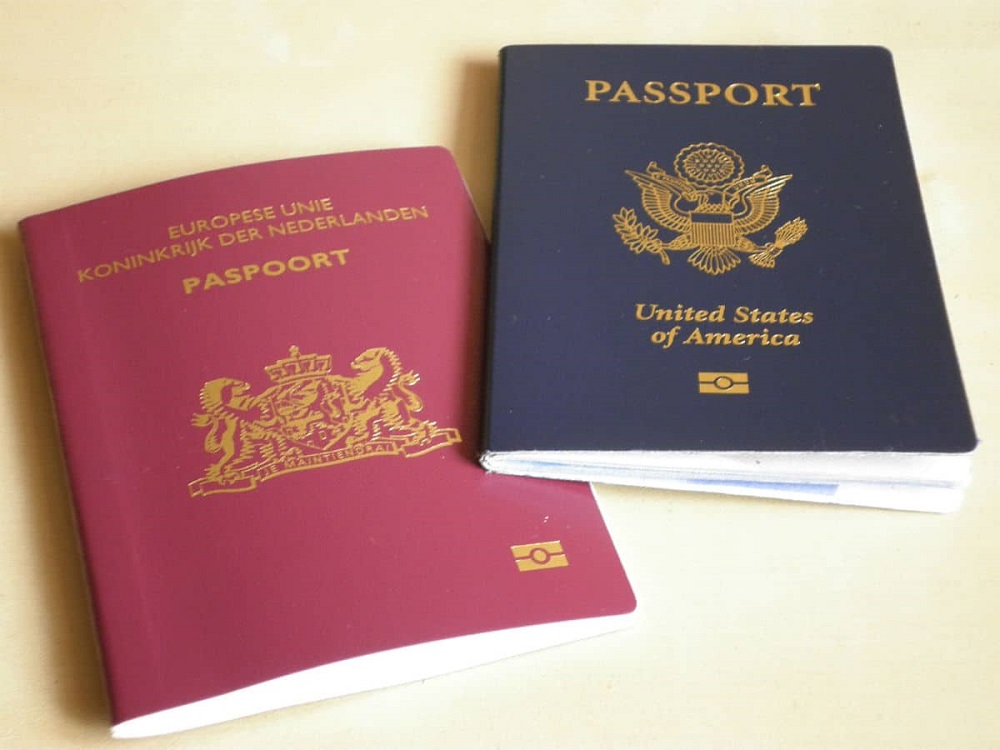
If you need help for getting your NIE, the Spanish ID card, chek the following blog: How to Obtain Your NIE in Spain
Secondly, you’ll need to provide proof of residence in Spain. This could be a utility bill, a lease agreement, or a bank statement, among other documents. This document should clearly show your name and your residential address in Spain. It serves to confirm that you are a resident of Spain and are therefore eligible to apply for a driver’s license in the country.
Thirdly, you’ll need to provide a certificate from your driving school. This certificate confirms that you’ve successfully completed the required driving education and passed the exams. It’s a testament to your theoretical knowledge and practical driving skills, demonstrating that you’ve met the necessary standards to drive safely on the roads.
Lastly, you’ll need to provide a medical certificate. This certificate confirms that you’re physically and mentally fit to drive. It’s typically issued following a medical examination, which includes vision and hearing tests, and a psychological evaluation. This certificate is crucial in ensuring that all drivers on the road are capable of driving safely and responsibly.
Applying for a driver’s license in Spain involves providing several key documents. These documents verify your identity, your residence in Spain, and your eligibility to obtain a driver’s license. By ensuring that all these documents are in order, you can smoothly navigate the application process and move one step closer to obtaining your driver’s license.
Application Process: How to Finally Be a Driver
The application process for obtaining a driver’s license in Spain involves several steps, each designed to ensure that all necessary checks and verifications are in place. While the process is generally straightforward, it can take some time, so it’s advisable to start well in advance of when you need the license.
The first step in the application process is submitting your documents. This includes your identification, proof of residence in Spain, a certificate from your driving school, and a medical certificate. These documents should be submitted to the relevant authority, typically the Traffic Department (DGT). It’s important to ensure that all documents are valid and up-to-date to avoid any delays in the application process.
Next, you’ll need to pay the application fee. This fee covers the cost of processing your application and issuing your driver’s license. The fee can usually be paid online or at the DGT office. It’s important to keep a receipt of your payment as proof that you’ve paid the application fee.

Once your documents have been submitted and your fee has been paid, you’ll need to have your photo taken for the license. This photo will appear on your driver’s license and serves as a form of identification. It’s important to note that there are specific requirements for this photo, such as a plain background and a clear view of your face.
After these steps have been completed, your application will be processed. This involves verifying your documents, checking your exam results, and assessing your medical fitness to drive. Once your application is approved, you’ll receive your driver’s license by mail. This can take a few weeks, so it’s important to plan accordingly.
The application process for a driver’s license in Spain involves submitting your documents, paying the application fee, having your photo taken, and waiting for your application to be processed. By following these steps and starting the process well in advance, you can ensure a smooth and successful application process.
Staying Current: The Ins and Outs of Renewing Your Spanish Driver’s License
Driver’s licenses in Spain come with an expiration date and require periodic renewal. The renewal process involves undergoing a medical examination to ensure you’re still physically and mentally fit to drive, and paying a renewal fee. It’s crucial to renew your license before it expires to avoid any penalties.
Maintaining an up-to-date driver’s license is not just a legal requirement, but also an important part of being a responsible driver. Driving with an expired license can lead to fines and other penalties. Therefore, it’s important to keep track of your license’s expiration date and start the renewal process well in advance.
Remember, driving is a privilege that comes with responsibilities. Keeping your driver’s license current is one of those responsibilities. It’s a small step that contributes to the safety and orderliness of the roads. So, make sure to mark your calendar and start the renewal process in time to ensure you’re always driving legally and responsibly.
The End of Your Travels: Expiration of Driver’s License
In Spain, the validity of a driver’s license is contingent on the age of the driver. For drivers under the age of 65, a driver’s license expires every ten years. However, for drivers aged 65 and above, the license needs to be renewed every five years. This system is designed to ensure that drivers maintain their driving skills and health standards as they age, contributing to overall road safety.
It’s crucial to be aware of the expiration date on your driver’s license. This date is typically printed on the license itself, and it’s important to note it and plan for renewal before the license expires. Driving with an expired license is considered a violation of traffic laws in Spain, and it can result in penalties.
If you’re caught driving with an expired license, you could face fines and other penalties. The exact penalties can vary, but they typically involve a monetary fine. In some cases, you may also be required to retake your driving tests or attend a driver’s education course.
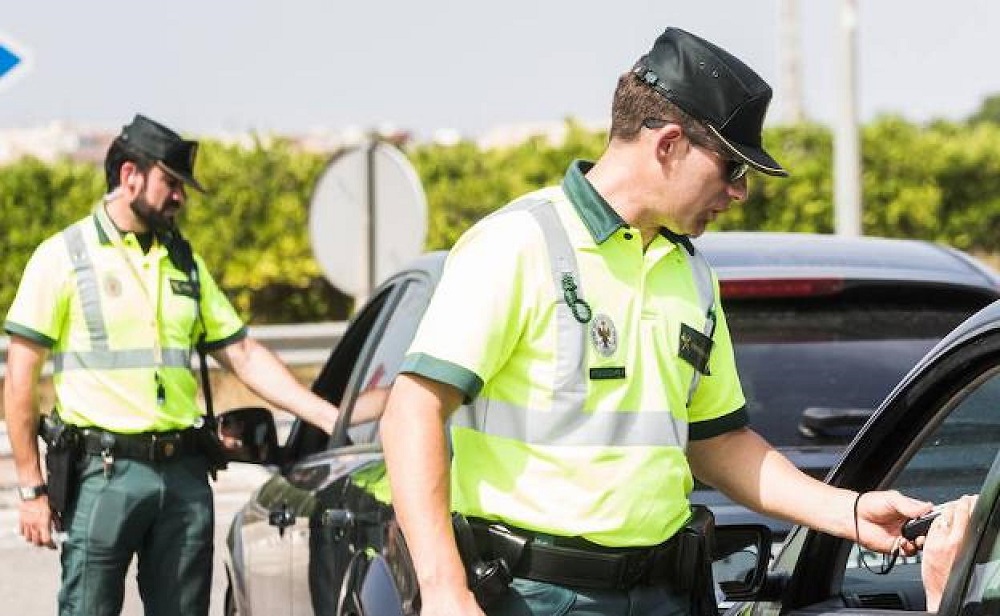
To avoid these penalties, it’s advisable to renew your driver’s license before it expires. The renewal process typically involves a medical check-up to ensure you’re still fit to drive, as well as the payment of a renewal fee. Once your renewal application is approved, you’ll receive a new driver’s license with a new expiration date.
It’s important to keep track of the expiration date on your driver’s license and to renew it before it expires. Driving with an expired license is illegal in Spain and can result in fines and other penalties. By renewing your license on time, you can ensure that you’re always legally permitted to drive on the roads.
The Driver´s Resurrection: Renewal Process for Your Driver´s License
The renewal process for a driver’s license in Spain is designed to be straightforward and efficient, ensuring that drivers can maintain their driving privileges with minimal hassle. This process involves passing a medical examination, paying a renewal fee, and submitting your application at the local traffic department. Once your renewal application is approved, you’ll receive your new driver’s license by mail.
The first step in the renewal process is the medical examination. This examination is similar to the one you underwent when you first applied for your license. It typically includes a vision and hearing test, as well as a psychological evaluation to assess your mental fitness to drive. The goal of this examination is to ensure that you’re still physically and mentally capable of driving safely on the roads.
Next, you’ll need to pay the renewal fee. This fee covers the cost of processing your renewal application and issuing your new driver’s license. The fee can usually be paid at the local traffic department or online, depending on the options available in your area.
Once you’ve completed the medical examination and paid the renewal fee, you can submit your renewal application at the local traffic department. This department is typically the same one where you initially applied for your driver’s license. The staff there will process your application, verify your documents, and submit your application for approval.
The renewal process is generally quicker and simpler than the initial application process. This is because much of the information and documentation required is already on file from your initial application. However, it’s still important to start the renewal process well in advance of your license’s expiration date to avoid any potential issues or delays.
Once your renewal application is approved, you’ll receive your new driver’s license by mail. This new license will have a new expiration date, typically ten years from the date of issue for drivers under 65, and five years for drivers 65 and above.
Renewing your driver’s license in Spain involves passing a medical examination, paying a renewal fee, and submitting your application at the local traffic department. By following these steps, you can ensure a smooth renewal process and continue driving legally on the roads.
Obtaining a driver’s license in Spain involves several steps, including enrolling in a driving school, passing theoretical and practical exams, and undergoing a medical examination. While the process may seem daunting, it’s a worthwhile investment that can greatly enhance your experience in Spain. Whether you’re planning to live in Spain long-term or just visiting, having a driver’s license will give you the freedom to explore the country at your own pace.




